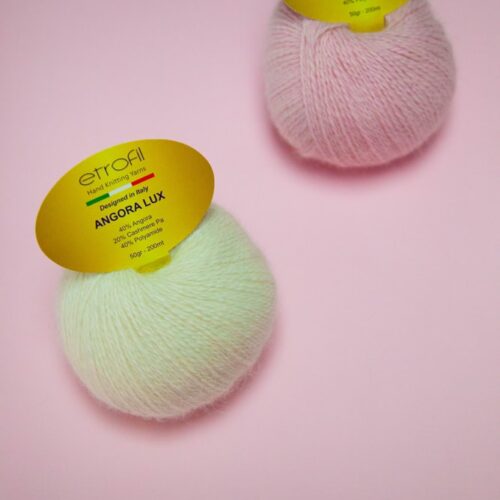Staple Fibres, Filament Fibres & Yarns
Fibres must be made into yarns before they can be used to create woven and knitted textile fabrics. Yarn is the term used to describe a continuous strand of textile fibers, filaments, or material that is suitable for use in knitting, weaving or other intertwining to form a textile fabric. The way yarns are created adds texture and other qualities to the fabric.



Before being made into yarn, fibres are categorized as either staple or filament. All natural fibres, except silk, are staple fibres, meaning that they are short fibres that must be twisted together to form yarns. Silk and manufactured fibres begin as long continuous strands, or filaments, that can be used as is or cut into short fibres, or staples, so that they better mimic natural fibres such as wool and cotton.
Fibres are twisted into a single yarn, which can be used as is, or two or more single yarns can be twisted together to form a ply yarn.

Yarns that have a low degree of twist are generally softer and less durable, but can be brushed to give a napped finish, meaning that soft fibres lay in one direction giving a slightly softer and fuzzier appearance, as in a brushed denim.
Yarns with more twist create a crisp and more durable fabric, but extremely high twist causes the yarn to buckle and bend; these yarns are used in crepe fabrics which regain some softness and drape as the yarn has a great deal of flex.
Fibres must be made into yarns before they can be used to create woven and knitted textile fabrics. Yarn is the term used to describe a continuous strand of textile fibers, filaments, or material that is suitable for use in knitting, weaving or other intertwining to form a textile fabric. The way yarns are created adds texture and other qualities to the fabric.
Before being made into yarn, fibres are categorized as either staple or filament. All natural fibres, except silk, are staple fibres, meaning that they are short fibres that must be twisted together to form yarns. Silk and manufactured fibres begin as long continuous strands, or filaments, that can be used as is or cut into short fibres, or staples, so that they better mimic natural fibres such as wool and cotton.
Fibres are twisted into a single yarn, which can be used as is, or two or more single yarns can be twisted together to form a ply yarn.
Yarns that have a low degree of twist are generally softer and less durable, but can be brushed to give a napped finish, meaning that soft fibres lay in one direction giving a slightly softer and fuzzier appearance, as in a brushed denim.
Yarns with more twist create a crisp and more durable fabric, but extremely high twist causes the yarn to buckle and bend; these yarns are used in crepe fabrics which regain some softness and drape as the yarn has a great deal of flex.
Complex or Novelty Yarns
Yarns can be created to have various visual effects. A novelty single yarn could have a slub, or an irregularity in the width and/or degree of twist of the yarn. This is often seen in natural fibres but can also be mimicked in manufactured fibres.
Ply yarns can have a base yarn, combined with one or more effect yarns. Examples of this are bouclé and chenille yarns.
Textured Yarns
Most manufactured fibres are thermoplastic and can therefore be heat-set into different textures such as crimped, looped and coiled yarns. These can create fabrics that are soft, warm, and bulky but still light weight.
